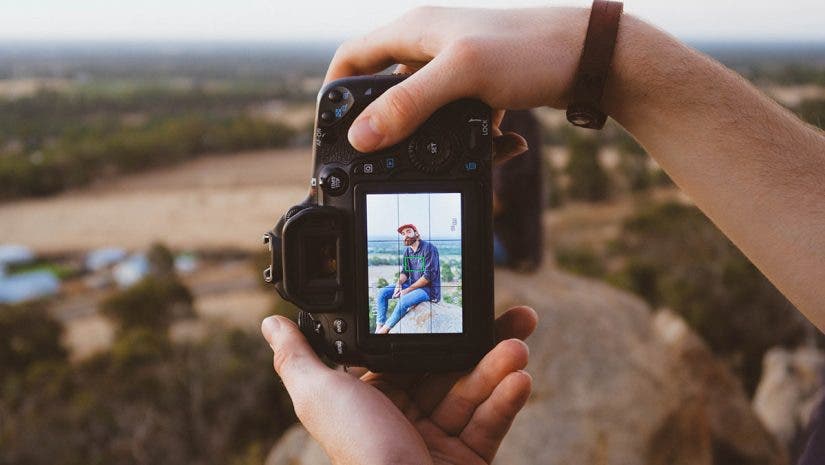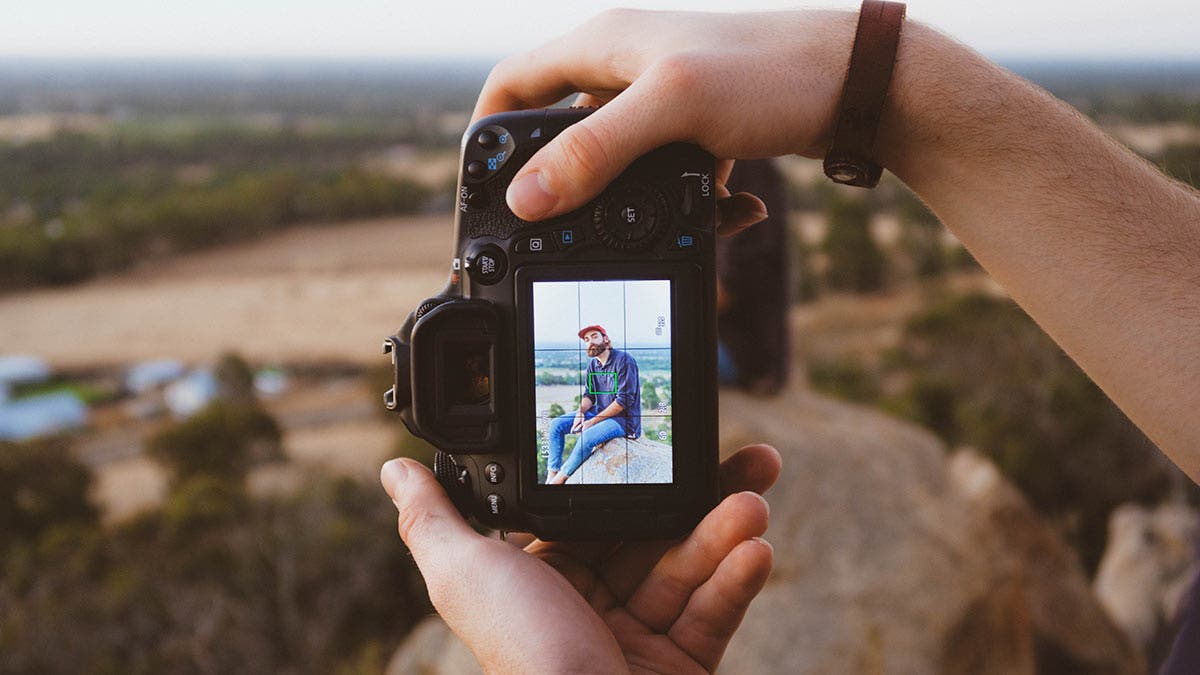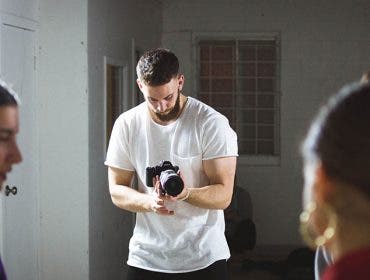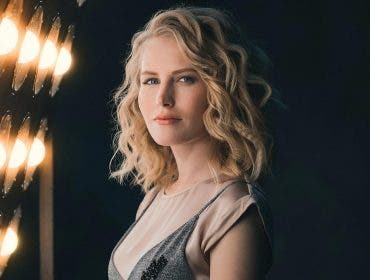The world of online camera simulators is something I’ve been playing in for years. Truthfully, there are few tools better than these for beginners who are trying to understand the mechanics of how all the different decisions you make when you take a shot affect the final outcome. A photo camera simulator helps make more “real” the way factors in photography are interdependent of each other.
So, from my own research here’s a list of some useful photography simulators, and a few words about each of them. Almost all of them are entirely free, so enjoy!
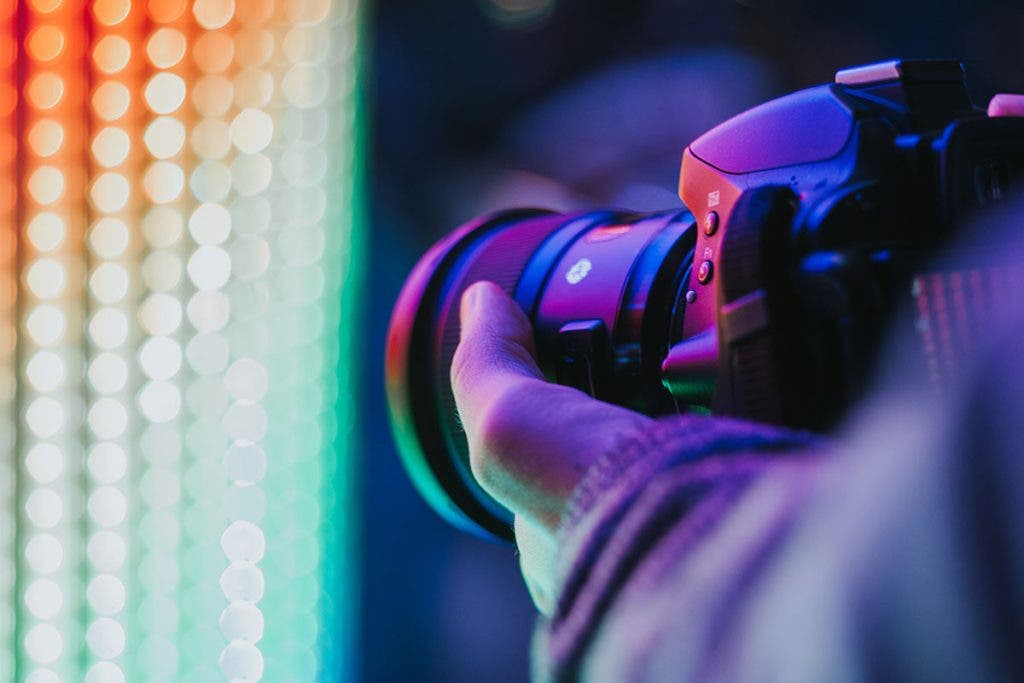
What is a Camera Simulator?
Many new photographers feel overwhelmed when learning how to use a camera. After using only a point-and-shoot or a cell-phone camera app, you may feel overwhelmed when learning photography concepts like aperture, shutter speed, ISO, depth-of-field, and other camera settings.
Camera simulators and lens simulators make the foundational concepts of photography easier to grasp so that you learn a lot and compare cameras before you invest in a DSLR or mirrorless camera. With a camera simulator, you can manually adjust a variety of camera settings to see how each one will adjust your resulting image.
Adjusting the three main camera settings with a camera simulator
The three main camera settings are aperture, shutter speed, and ISO.
Aperture is the adjustable opening in the camera’s lens that controls how much or how little light enters the sensor. Shooting in aperture priority mode (Av) lets you adjust the size of this opening, which changes a photo’s depth-of-field as well as its brightness, or exposure.
Shutter speed refers to how long a camera’s shutter stays open and exposes the sensor to light, measured in fractions of a second. Fast shutter speeds freeze action in the moment, while longer shutter speeds create motion blur. Shooting in shutter priority mode (Tv) also affects the brightness of a photo based on how long the sensor is exposed to light.
ISO is a simpler setting that lightens or darkens a photograph. High ISO values create brighter pictures, while low ISO values create darker pictures. Unfortunately, ISO isn’t a “cheat code” to perfectly exposed photos; increasing the ISO value adds noise, or grain, to pictures. Capturing the perfect image is to balance the camera’s three main settings.
As you tweak each camera setting, the camera simulator renders photo simulations so you can see in real time how you’re changing the visual qualities of your photograph.
Online camera simulators are great tools for understanding the basic principles of photography, developing photography skills, and beginning to familiarize yourself with how changing camera settings will shape your photograph.
Benefits of Using a Camera Simulator
Using a camera simulator is one of the easiest and most convenient ways to understand the basics of photography. Camera simulators allow you to experiment with settings anytime, anywhere. It doesn’t matter if it’s the middle of the night and you have nothing or no one to shoot — just hop online to practice!
Camera simulators also help establish an element of predictability when it comes time to shoot for real. If you’ve spent enough time understanding settings and what they do, you can start to develop your own mental “presets” — a rough idea of what works and when. That’ll help you get going on the fly, and you can further refine your settings after snapping a few shots.
You can really learn a lot from a camera or DSLR simulator when you’re not actually shooting.
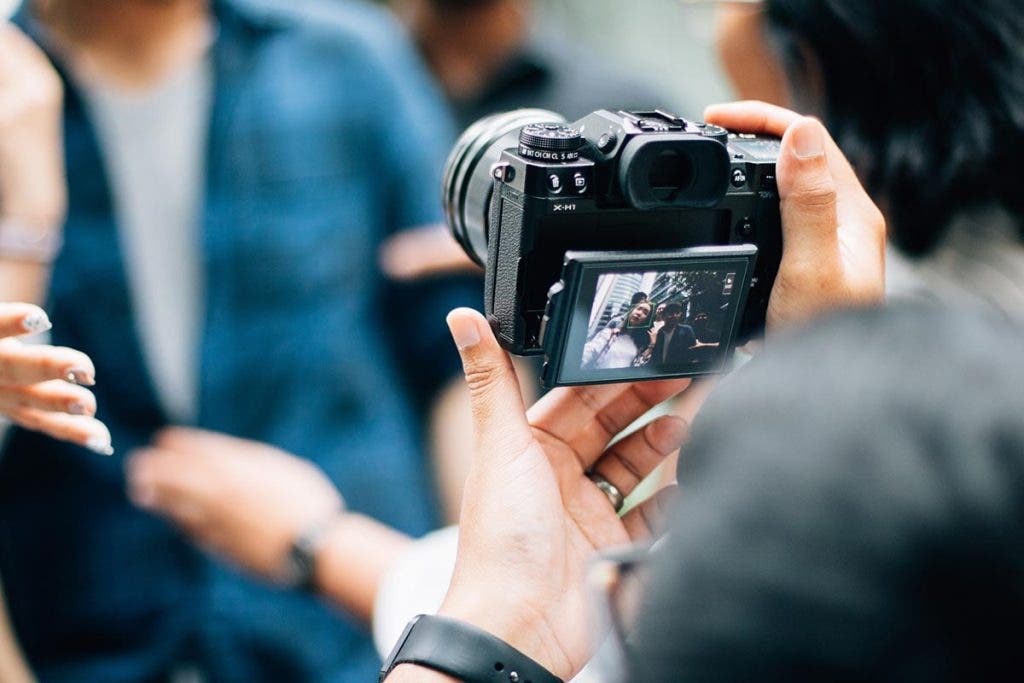
Best Online Camera Simulators
Play by Canon
Canon’s very helpful site is intended for photographers moving up from a point-and-shoot. There is a sample scene, including motion (a spinning propeller), and you can change all the variables before you hit the “take a shot” button to see how your final shot would come out.
Similar to a real camera, there’s an exposure meter on the screen, and Canon gives you tips in a sidebar and feedback as soon as you take the shot to help you understand the choices when you take a photo. As a cool feature, Canon saves the last three shots next to each other, so you can compare how your choices impacted the final images.
If you plan to invest in a Canon camera, this is a great option because it will introduce you to the symbols and abbreviations you’ll find on all Canon camera bodies. Shoot in full Manual mode, Shutter Priority (TV), or Aperture Priority (AV) to start understanding the ideal uses for each mode.
Exposure Simulator by Andersen Images
A bit simpler than Canon’s site is this Exposure Simulator site. You can control the three exposure variables — aperture, shutter speed, and ISO — and see what different choices will do to your exposure level. Easy and straightforward, this site is perhaps the cleanest way to see the exposure triangle’s interdependence.
This camera simulator also uses a camera dial graphic modeled after Canon cameras. So, if you plan to shoot with a Nikon or Sony camera, you’ll still need to memorize the symbols and abbreviations associated with the camera settings for those systems.
Exposure Simulator is a very responsive method for tracking how changing camera settings will adjust your image.
Before you go ahead and use it, note that the Exposure Simulator currently does not work with Internet Explorer. Instead, the creators urge users to use Chrome or Firefox when using the simulator.
Photography Mapped
This is an interesting site — it’s very barebones but shows you exactly what you need. You pick your settings and click “Take Photo” for the site to generate a (very obviously) fake photo with those settings.
It’s interesting to me because the gentleman who made the site did it for some good reasons (see the “About” page) — he says that according to a 2012 study, two-thirds of non-professionals who own DSLRs never take it out of “Auto”! Help!
While it’s very dated and cartoonish in style (think Oregon-Trail-era graphics), this online camera simulator provides context information to bolster your understanding of exposure.
It tells you if your resulting image will be overexposed or underexposed, clarifies depth-of-field information, and tells you how much noise you can expect with the selected camera settings.
CameraSim
CameraSim is a flash-based web app that allows you, in a similar way to the other sites here, to change the variables that make up a photo and snap a “picture” to see if you’ve got the settings correct.
But you’ll notice that it has a big brother, CameraSim Pro — an available upgrade that will be prompted every few shots. Hot tip: after fifteen shots you’ll have to refresh the page before you can continue using the tool. Otherwise, it’s well made.
This online camera simulator is a level above other options thanks to an incorporated focal-length simulator, an adjustable distance to your subject, a tripod toggle, and a moving subject.
CameraSim has other features namely The Exposure Contraption and the upcoming CameraSim 3D. The Exposure Contraption demonstrates exposure as a scale. On one side, the amount of light itself along with ISO and aperture and shutter speed on the other side. Moreover, CameraSim 3D is a work-in-progress that teases the newest version of CameraSim.
The camera settings use Canon abbreviations, and the viewfinder simulation is Canon-style. After snapping a photo, the simulator app will advise you on how you can improve your image.
DOF Simulator
This site floored me. I remember when I was first learning photography how hard it was for me to wrap my mind around such concepts as depth of field and hyperfocal distance. This site nails it — it’s got everything you need to simulate everything you need to know about depth of field and understanding how focus works.
It’s quite advanced — even professionals can benefit from this site — so if you see a term that you don’t understand, hit your google search to learn what everything means. You won’t regret it.
It’s not as flashy as other online cameras in terms of design, but the number of settings you can change in this simulator is impressive. You can even select a specific camera’s sensor to see how adjustments reflect on the camera model you’re planning to buy. This is the best focal length simulator available.
Be the Camera
This site has an interesting twist — the author wanted to demonstrate the differences in noise and bokeh based on which camera and lens combination you’re using, starting from a cell phone and moving up to a DSLR. Using the two drop-down menus on top, select your camera configuration and scene, and then use the menu on the left to change the ISO, aperture, and shutter speed.
The strength of this online camera is the contextual information provided for each sample scene. The images you can choose are simple and not the most exciting subject matter, but each image includes specifications like distance to background, distance to foreground, and the conditions under which the image was shot.
Camera Simulator by Canon Labs
According to the description, this is a fully featured virtual reality DSLR simulator. According to the reviews (at the same link), it has some work to do. If you have an Oculus Rift, take this free VR app for a spin.
If you’re an avid VR user and want to explore the various options offered by Canon, this app provides a unique approach to photography. The most useful aspect of this camera simulator is the ability to check out product specifications for a variety of cameras and lenses. That feature lets you compare photography gear before you shop.
Magic Hour with HTC Vive
Offered up at Steam, it’s billed as a work still in progress, though the screen captures look nice. It also claims to replicate the photographic process in VR, and that you can change cameras, settings, and so on, and see how your photos change under different conditions.
The use of VR for camera simulators may seem strange, but Magic Hour takes the power of online cameras further with the ability to frame photos within moving environments. Rather than selecting from predetermined subjects, you’ll have the flexibility to shoot in any orientation and aim your camera anywhere.
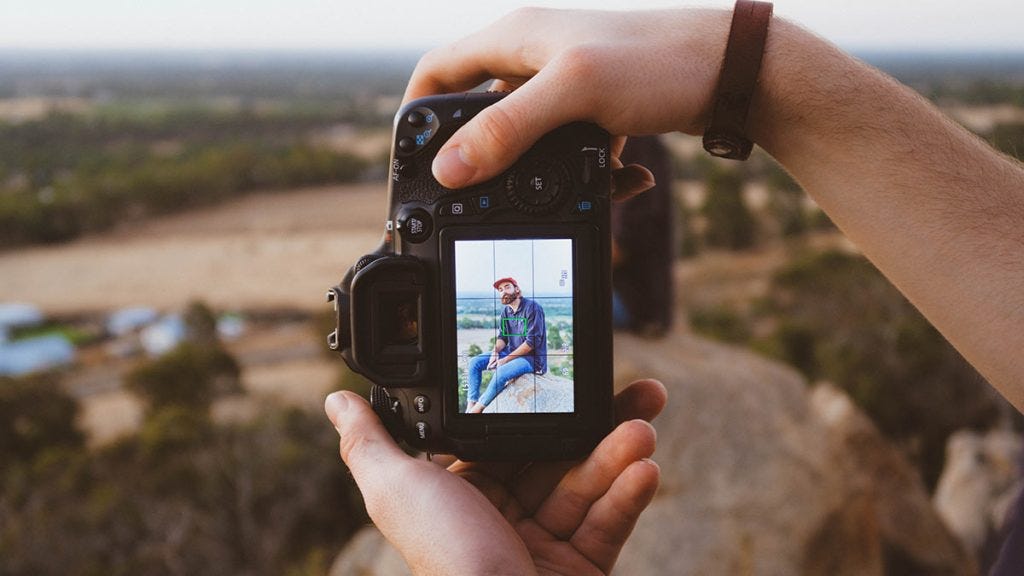
Improve Your Photography Skills with a Camera Simulator
Experienced and professional photographers will tell you developing your photography skills is an ongoing process. It’s unlikely that you’ll spend time with any of these online cameras, then be able to jump into advanced shooting conditions without a bit of real-world practice.
That said, using an online camera, a focal-length simulator, a lens simulator, or any other type of tool for photo simulations makes solidifying the basic principles of photography quick and easy. When you’re trying to learn basic information like how a wider aperture will affect exposure, or how to adjust ISO to decrease grain, camera simulator apps are a big help.
Learning photography is a journey. If you want to start but don’t have a camera to practice with, a camera simulator is a convenient way to develop basic skills. Once you have a camera in your hands, you’ll be familiar with the way certain camera settings interrelate — and how they will affect your photographs.
Camera Simulator Frequently Asked Questions
An online camera simulator is a tool you can find on the web that functions similarly to a real camera. It has features and controls that allow users to experiment with a camera’s settings and learn techniques without the cost of buying a real camera.
Underneath the features and buttons users can easily click and adjust, online camera simulators are made possible by a lot of programming. Through coding, creators simulate factors like exposure, aperture, shutter speed, and ISO settings, providing a realistic learning experience.
Features found in online camera simulators are manual controls for adjusting exposure settings, different shooting modes like aperture adjustments and manual mode, and options to change lenses and camera models.
Online camera simulators want to be as realistic as possible even though they may not be able to perfectly replicate the experience of using a physical camera. However, they provide a valuable platform for learning and practicing photography techniques.
Yes, online camera simulators are perfect tools for beginners to learn photography. They allow users to experiment with various settings and techniques without the need to buy expensive camera equipment. Practice with an online camera simulator to help build confidence and improve your photography skills.
Some online camera simulators offer simulations for specific camera models, while others provide more generic cameras, just to give a user the chance to start getting familiar with the buttons and modes. It’s useful to check the features of a certain brand’s simulator to see if it supports the camera model you’re thinking of getting.
Many online camera simulators offer free versions with basic features, while some may require a subscription or payment for access to advanced functionalities, especially if it’s an app.
